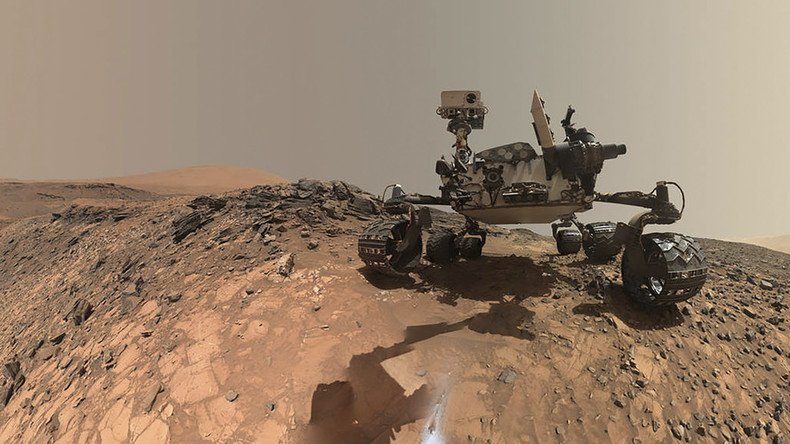No guarantees: NASA delays mission to Mars over faulty instrument setback

NASA has suspended its next mission to Mars, initially scheduled for March 2016, because of a fault detected in a key research instrument. Mars watchers say the setback means the next possible launch might not be until 2018.
The agency’s latest mission to Mars was meant to send off the InSight spacecraft, designed to examine the Red Planet’s geology with instruments that could monitor seismic activity. The fault discovered was a leak in the vacuum-sealed metal sphere that held three seismometers.
The instrument, the Seismic Experiment for Interior Structure (SEIS), supplied by the French space agency CNES, was one of two main science probes planned for the planet. The other one was a German-made thermometer that would be sent down a small bored hole to monitor the temperature of Mars. The mission also included measuring the variations in the Martian orbit.
Nasa stelt robotmissie naar Mars met minstens twee jaar uit https://t.co/lTIHUXhKx7#nieuwsbladpic.twitter.com/HV4X7X4y6m
— Het Nieuwsblad (@Nieuwsblad_be) December 23, 2015InSight (an acronym for Interior Exploration Using Seismic Investigations, Geodesy and Heat Transport) was being prepared for launch between March 4 and March 10, 2016, before the fault was detected, and scheduled to land on Mars six months later to begin its mission. It would have been the first mission to the planet since the Curiosity rover landed in 2012.
“A decision on a path forward will be made in the coming months, but one thing is clear: NASA remains fully committed to the scientific discovery and exploration of Mars,” NASA’s John Grunsfeld said, according to AFP.
Nasa likely to delay 2016 mission to Mars by two years over critical leak https://t.co/yEq7JNsedUpic.twitter.com/Ij9lWG8K3b
— Wired UK (@WiredUK) December 22, 2015A new launch date is not guaranteed, according to Science Magazine. The agency will review potential solutions to the instrumental problem, as well as run the costs of potentially delaying the mission for two years. Any decision may not be known for a couple of months.
“We either decide to go forward, or we don’t,” Grunsfeld said.
NASA Suspends Next Mars Mission by at Least 2 Years https://t.co/RuSH3WKgkp | https://t.co/Xwazc3MukYpic.twitter.com/i2USiXJ3wc
— Test User 6 (@test_g3136193) December 22, 2015Missions to the Red Planet typically don’t lift off except within a small window wherein the orbits of Earth and Mars align closely enough so that the trip is “economically feasible,” the Verge reported.
“We’re all just pretty disappointed right now. Devastated would be a better word,” Lisa Pratt, a biogeochemist at Indiana University in Bloomington and chair of a Mars advisory committee for NASA, told Science. “Everyone has been waiting to get a seismic instrument on Mars after Viking.”
#NASA starts looking for astronauts to ‘blaze trail’ to Mars https://t.co/bEr8KtwSPGpic.twitter.com/LfFmYoy9df
— RT America (@RT_America) December 15, 2015NASA’s twin Viking landers, launched in 1976, also carried seismometers, but they were located on top of the lander decks where they collected background noise and detected wind direction more than anything else, Science reported. The seismometer on Viking 1 also failed. The seismometer on InSight would measure the thickness of the crust, mantle and core boundaries on Mars.
Moisture farm on Mars could lead to water supply for future astronauts https://t.co/hrJUgCZZAQpic.twitter.com/aXz9OTnXjO
— RT America (@RT_America) December 10, 2015The $425 million mission was the most recent selection in NASA’s Discovery program, which was meant to be low-cost yet competitive. InSight was selected by the space agency over a comet hopper mission, and one that would have landed a boat on Saturn’s moon Titan.












